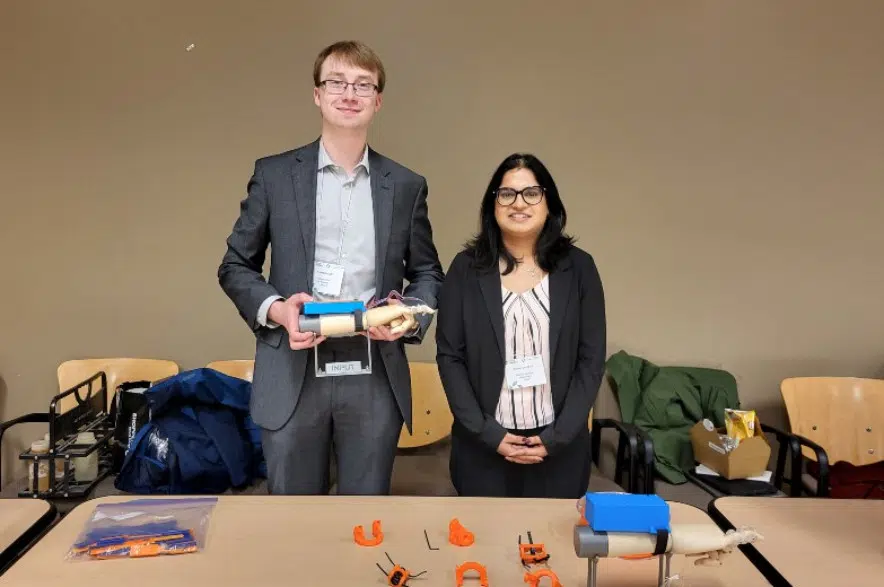Hand injuries are one of the most common work related injuries in the province.
According to the Saskatchewan Workers’ Compensation Board (WCB), the 3,282 hand injury claims registered in 2021 were the most for any body part that year.
This inspired a group of engineering students at the University of Regina to create the Adaptive Rehabilitation Device for Fingers — a cost-effective device that uses 3D printed materials.
“We wanted to develop a device that can both immobilize each and every joint but also aid in the rehabilitation process of the finger,” said fifth-year industrial systems engineering student Dane Fichter.
The device was the product of 8 months of hard work, and the students got to showcase it to the public during the Faculty of Engineering and Applied Science’s 24th annual Project Day — a “conference-style” event where students in their last years get to show off their final projects.
“So initially, we kind of struggled to come up with an idea but then we talked with our academic supervisor, and she actually has a hand injury right now,” said Mathew Martineau, a 5th year industrial engineering student.
“So we started doing research and then like Dane had mentioned, we found the statistic that there were over 3,000 hand injury claims to the WCB in 2021. So we sort of built off of that and decided to design an adaptive rehabilitation device for hands.”
Fifth-year student Janine Morales said that during the research phase of the project, the group learned that many existing rehab devices were fairly expensive.
She said they sought to create a relatively cheaper alternative in order “to make sure that more people can get a hold of this device and actually help them in the rehabilitation process of their injuries.”
The group went through about five different prototypes and they printed out four or five versions of their final product.
Fichter said the device has been tried out by their academic advisor as well as their medical advisors, but as of now no patients have used it yet.
Sheetal Kaushal, also in her final year, said learning about different technologies like 3D printing and building from scratch was one of the most rewarding parts of the experience.
“So it was kind of cool to play around with geometries and (come) up with an idea together,” she said.
Like with any project, the students faced a few hurdles along the way.
Although their vision was realized, the students spoke about ways in which they could have made the process much smoother.
“I would suggest simply just starting earlier,” Martineau said. “It kind of took like two or three weeks to get the design process going. So if we could have got that a bit earlier, we would have been able to kick out even more prototypes.”
Martineau also emphasized just how important communication is for a project like this.
Morales said the device is currently designed for the size of a ring finger and is not customizable.
“I guess we would just try to start with the ring sizes from the beginning instead of trying to make it universal just because that’s too broad,” Kaushal said.











